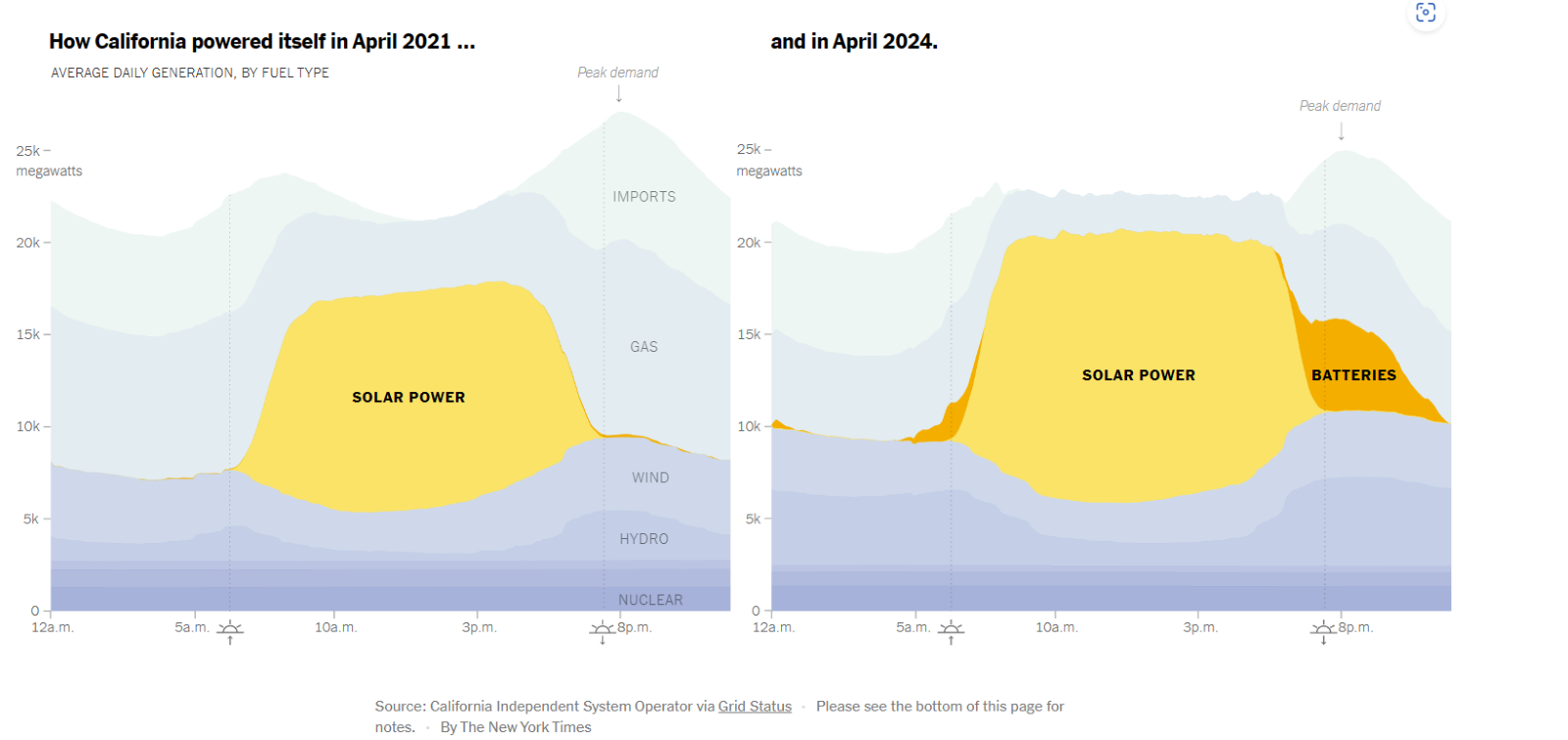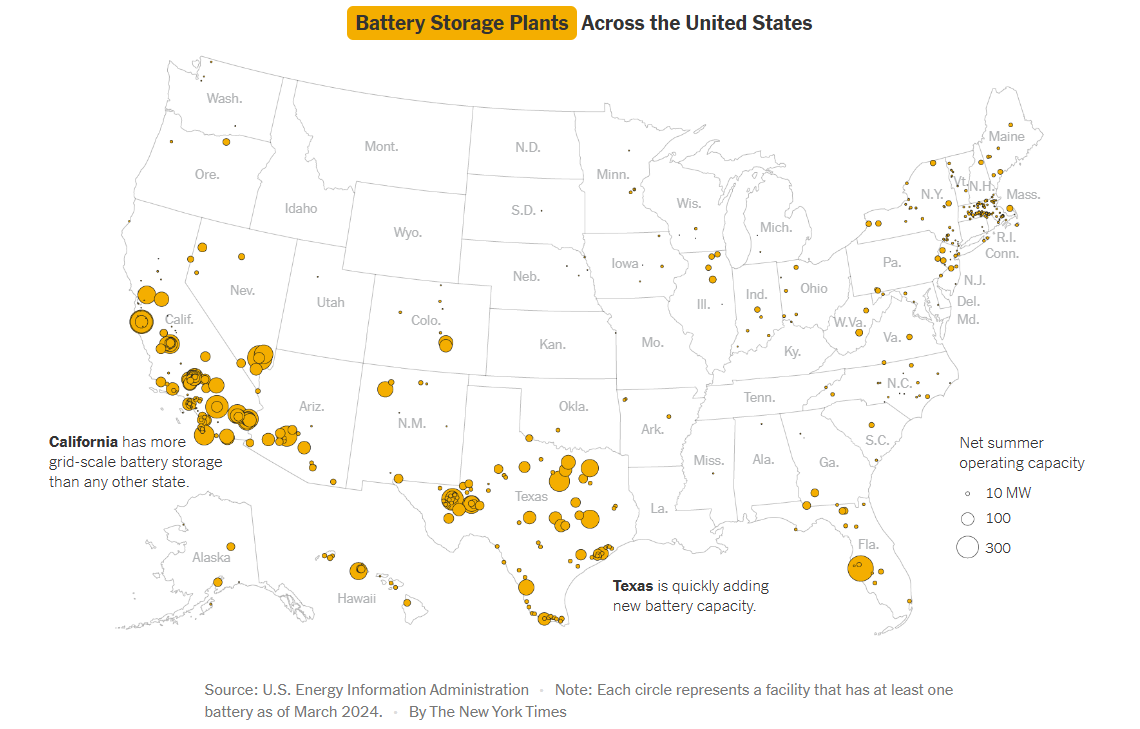Demand Response For the Changing Grid
As renewable energy grows and EV adoption rises, demand response programs are key to ensuring a reliable, efficient, and balanced power grid.
.avif&w=3840&q=75)
The world of electricity generation is rapidly evolving. Companies are constructing solar panels in deserts, wind farms on mountains and offshore, and now, some are setting up extensive battery "farms" across many acres to support the grid when the sun isn't shining and the wind isn't blowing. After investing billions of dollars in generating electricity, it might seem like we've got it all figured out. However, there are still gaps to address. These charts, from a recent New York Times article about the evolution of battery storage usage in California, illustrates the issue quite well:

As we start using different sources of energy, these new sources are often not located where the old ones were. This means we need big projects to move the electricity from where it is made to where it is needed. Utilities in the USA estimate that hundreds of billions of dollars are needed to transport this new generation and make it accessible through transmission lines. These transmission lines take years — or often decades — to build because they must occupy a space, and no one wants a transmission tower in their front yard, the school playground, a graveyard, or almost anywhere else.
Once all the transmission is built, there are still gap. Again from this chart from the New York Times, illustrates the point quite well:

When power reaches the areas where it will be used, it also needs to be "distributed" to the homes and businesses that will use it. That should be straightforward, right? After all, nearly all buildings are already connected to power lines. But it's not quite that simple. Usage is rapidly changing, too. Each electric vehicle (EV) uses about as much electricity as a house. Moreover, in homes, heating systems that previously used gas and oil are increasingly being converted to electric heat pumps, and the use of electronic devices is growing every year. Thus, the existing distribution system needs as much updating as the transmission system. It’s complicated.
But, if you could supply the power exactly where it is needed, most of those expenses and complications would disappear. Fortunately, solutions are emerging. Home energy storage is on its way, although it’s currently costly and requires space. Solar panels can be installed on rooftops, but many apartments lack a suitable roof, and some homes are too shaded for effective solar energy capture. Electric vehicles (EVs) will someday be able to contribute to the grid just as they draw power from it, but that capability isn’t available yet. This leaves us with managing our power use so it never exceeds what our existing grid can handle. If we adjust our consumption to match the available supply, the two will align at minimal cost, benefiting everyone. Demand response is all about such control and preparing for the future.
Ready to Start Earning?
Join thousands of users who are already earning rewards while helping the environment.